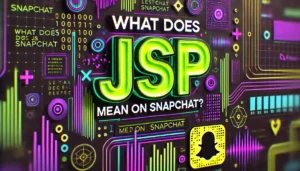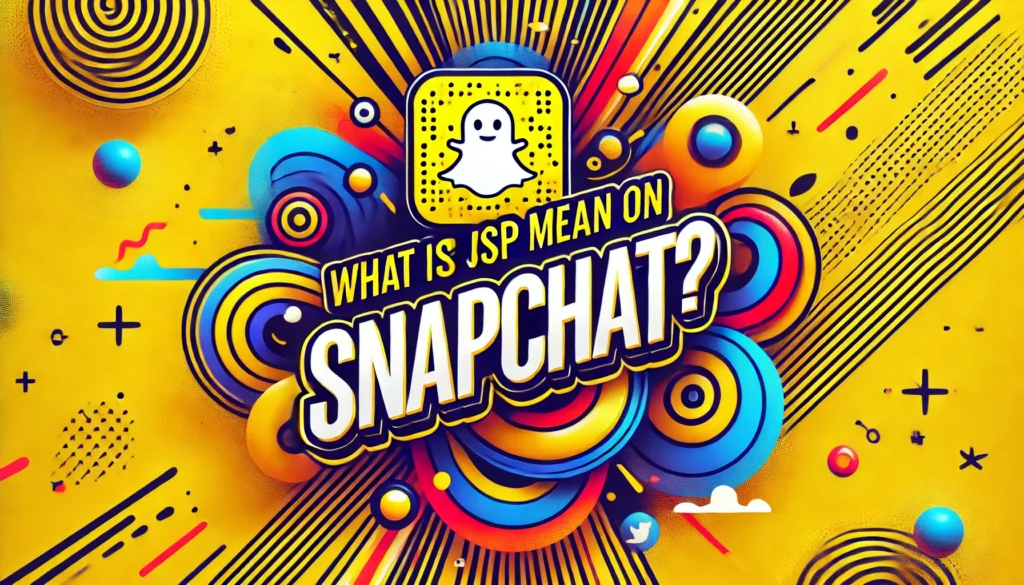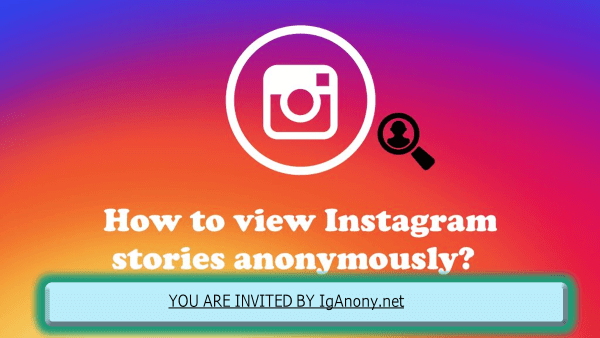Snapchat has evolved into a popular social media app used by millions of people around the world every day to connect with friends through disappearing snaps and direct messages. The platform is filled with a number of different slang terms and acronyms, making messaging simpler and quicker. Among these, JSP is one of many acronyms that appear in stories, group chats, or within a message sent directly to a user. This can often leave users confused about the meaning of the used term.
From personal experience, I’ve noticed JSP pop up quite a bit in my own Snapchat interactions. Initially, it was puzzling, as it wasn’t as straightforward as other acronyms like LOL or BRB. After seeing it used in various contexts by friends, I came to understand that JSP could stand for “Just Saying,” adding a casual note to messages. This casual insertion helps clarify or soften statements, ensuring that the conversation remains light-hearted. Thus, knowing these acronyms not only enhances your chatting fluency but also enriches your social interactions on this dynamic platform.
Meaning of “JSP” on Snapchat
On Snapchat, the term JSP can be a bit of a chameleon, showing up in casual conversations among users. It primarily stands for “Just Playing” or “Just Saying Peace,” used to clarify that a previous message was meant to be lighthearted or playful. This flexibility in using JSP helps to ensure that friends know you’re not being serious, maintaining the fun and ease that Snapchat is known for. From swapping stories to teasing replies in group chats, understanding and applying JSP appropriately can save any message from being misinterpreted.
Having engaged in numerous Snapchat exchanges myself, I’ve found JSP to be incredibly useful in keeping the tone friendly and joking. Whether it’s responding to a friend’s outrageous claim or adding a twist to an ongoing joke, tagging a JSP at the end of my snaps reassures my contacts that I’m not serious. It’s these nuances that make Snapchat an engaging platform for dynamic and common social interactions, where a quick acronym can keep the digital banter lighthearted and enjoyable. What Does CFS Mean on Instagram.
Examples of “JSP”
In Snapchat exchanges, JSP is frequently used to clarify that statements are meant to be fun and non-serious.
- Texting a friend: “You’re the worst at picking movies, JSP” — This shows you’re just teasing and not actually criticizing their choices.
- Playful threat: “I’m going to delete your number, JSP” — Indicates the comment is in jest and the message should not be taken to heart.
- In a group chat: Sending a bold claim like, “I own the best playlist on Spotify, JSP” — Clarifies that the statement is meant for fun and is not a serious boast.
- Responding to a mistake: After sending a wrong emoji response, “Oops, wrong one, JSP” — Lightens the moment, indicating that the initial message was not serious.
Why Do People Use JSP?
JSP is a handy acronym on Snapchat that serves multiple purposes in enhancing casual conversation. Primarily, it keeps the conversation casual and light, often acting as a cue that no serious or deep meaning should be inferred from the messages. This shorthand is especially useful in today’s fast-paced digital interactions as it saves time on typing out full disclaimers or explanations. For instance, when sharing Just Some Pics that might not be of great importance, JSP preempts any overthinking on the receiver’s part, effectively setting expectations and avoiding potential misunderstandings about the content’s significance. By using JSP, users streamline communication and keep their snaps quick and fun.

How and Where to Use “JSP” in Snapchat?
Using JSP on Snapchat is quite simple and effectively communicates that you are kidding. A great strategy is to add JSP at the end of a message to instantly lighten the mood
For example, when you’re using JSP in a Snapchat conversation, it’s a handy way to clarify that a comment is joking or sarcastic, ensuring the dialogue remains light and prevents misunderstandings. If you respond with something bold like, “I’ll never speak to you again! JSP,” it immediately lets the other person understand that you’re just playing. This quick tag at the end of your message makes it clear you are not serious, fostering a playful atmosphere and helping to keep interactions breezy and enjoyable.
To learn when and how to effectively use JSP on Snapchat, consider the various situations where clarity and tone are essential.
- Making a playful joke in a group chat: Insert JSP to signal that your message is in good spirits, especially when the tone might be misunderstood.
- Teasing friends: Add JSP after a teasing remark to keep the conversation friendly and ensure everyone knows it’s all in fun.
- Response to a funny situation: When replying to a humorous or absurd snap, conclude with JSP to further lighten the mood and share in the laughter without any misinterpretation.
- In the midst of a friendly argument: Use JSP to diffuse tension and remind others that the debate is just for entertainment, keeping the atmosphere light and enjoyable.
How to Respond to JSP
When someone sends a Snap with a caption ending in JSP, your response should be equally casual. Recognizing that JSP is used to keep the tone light and playful, reply in a manner that continues the jest.
- Cool, thanks: A simple and effective acknowledgment that shows you understand the light-hearted nature of the previous snap.
- Got it, just some pics: Use this response to convey you recognize that their message, flagged with “JSP,” was not meant to be taken seriously.
- Nice, what else are you up to?: This keeps the conversation flowing and expresses genuine interest in continuing the casual chat.
- Sharing: If the snap involved a joke or a playful scenario, respond by sharing your own similar experiences, maintaining the fun and engaging atmosphere.
When you receive snaps with “JSP” (Just Saying Peace), crafting responses that acknowledge the playful tone is key to maintaining the light-hearted spirit of the exchange. A simple “Got it!” or “Haha, nice one!” helps to keep the conversation going without diving into specific detail, effectively preserving the casual and breezy atmosphere that Snapchat is known for.
What Does JSP Mean in Texting?
In general texting, JSP usually means “Just Playing,” which tells the other person that your message is a joke or not to be taken seriously.
Using JSP in a text, for example, “I’m going to beat you at this game, JSP,” means you’re just having fun and don’t want the person to take it seriously. It helps to show you’re joking, keeping the conversation light and playful, and avoids potential misunderstandings. By appending JSP to playful threats or competitive banter, it reassures the recipient that there’s no real challenge or harsh feelings behind the words, promoting a friendly, humorous exchange.
What Does JSP Mean On Snapchat: Other Meanings of JSP
While JSP is commonly understood on Snapchat to indicate light-hearted, joking remarks, it’s worth noting that this abbreviation can carry different meanings in different contexts within the realm of Snapchat. One of the most common alternative meanings for JSP in casual conversations is “Just Some Pics.” This usage is particularly useful when someone wants to share images without implying any significant importance or requiring a detailed response.
FAQs ( Frequently Asked Questions )
What does “JSP” mean when texting?
In texting, JSP commonly means “Just Playing,” effectively showing that a message is meant as a joke.
What does “JSP” stand for?
On Snapchat, JSP typically stands for “Just Playing.”
What is “JSP” in simple words?
In simple terms, JSP on Snapchat is a way to say you’re joking or not serious.
What is JSP’s comment?
On Snapchat, a JSP comment typically refers to a playful or joking remark.
What is the “JSP” expression?
The JSP expression on Snapchat means that a message is said in a lighthearted and joking way.
Conclusion
JSP, which stands for “Just Playing,” is a flexible and useful acronym on Snapchat that helps convey that a message is meant to be humorous and playful. By adding JSP to messages, users can show they are not being serious, which helps keep the conversation lighthearted and prevents potential misunderstandings. It adds a fun touch to interactions, ensuring that everyone knows the sender is joking and maintains a friendly tone in chats. This simple acronym thus serves as a valuable tool in digital communication, enhancing the clarity and enjoyment of daily Snapchat exchanges.



